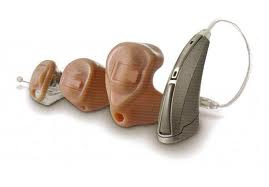Hearing aid devices have come a long way in helping many people overcome their hearing difficulties. These electroacoustic devices have tireless sought to help wearers perceive sounds that would otherwise not be audible or clear enough to comprehend. Technology has also caught up with them as well. If you don’t want a largely visible device, there are those designed to be invisible to the world, should you want to be subtle about your hearing difficulties. In any case, there are different types of aids, spotting different designs, and offering different levels of functionality.
Benefits of hearing aid devices
Unlike glasses, which do have the potential of correcting 20/20 vision, hearing aid devices cannot correct a hearing loss. Their purpose is to simply make sounds more accessible, either through amplification or modulation. That said, there are many benefits that they convey. They enable a wearer to perceive sounds they would have previously been unable to. They also improve the ability to communicate in somewhat noisy environments such as public spaces. Generally speaking, they trigger many improvements in different areas of the life of a person with a hearing impairment. These range from fostering a greater sense of independence, and encouraging greater social activity.
Hearing aid devices come with many different features
As previously pointed out, technology has caught up with these devices, meaning you can find one that offers a long list of features. There are those that are compatible with telephones and those that come with wireless hearing aids. Some of the latter come with FM systems. Digital aids have become particularly in recent times, which transmit sound with greater accuracy. Additionally, these can be customized to an individual’s specific requirements, and can offer such features as background noise reduction. There are also those that come with remote controls, which are used to make adjustments, such as volume, without touching the device.
What is the price range of hearing aid devices?
There is some gravity to the decision to purchase a hearing aid, mostly because of the cost implications. Depending on the features that you want in the device, it could cost anywhere from hundreds to thousands of dollars. The price issue in this case is not as significant, as the benefit conveyed greatly outweighs the cost implications. However, there are some considerations that you should make before settling on the purchase. The first step is to get a professional checkup. The goal is to understand the cause of your hearing loss and the extent. Understanding this will help you know the kind of hearing aid you need, in terms of features, and long term usability.

Image Credit: Waifer X
A few points to note
Hearing aid devices do take a little getting used to. It might take a couple of weeks before you are completely in tune with the device. Practice, with these aids, does indeed encourage greater adjustment. In other words, the more you use the device, practicing in different kinds of environments will help you adapt to using it.
The purpose served by hearing aid devices cannot be underplayed. They have restored normal life to those whose hearing has been impaired through a genetic disorder, physical trauma, or infection.
